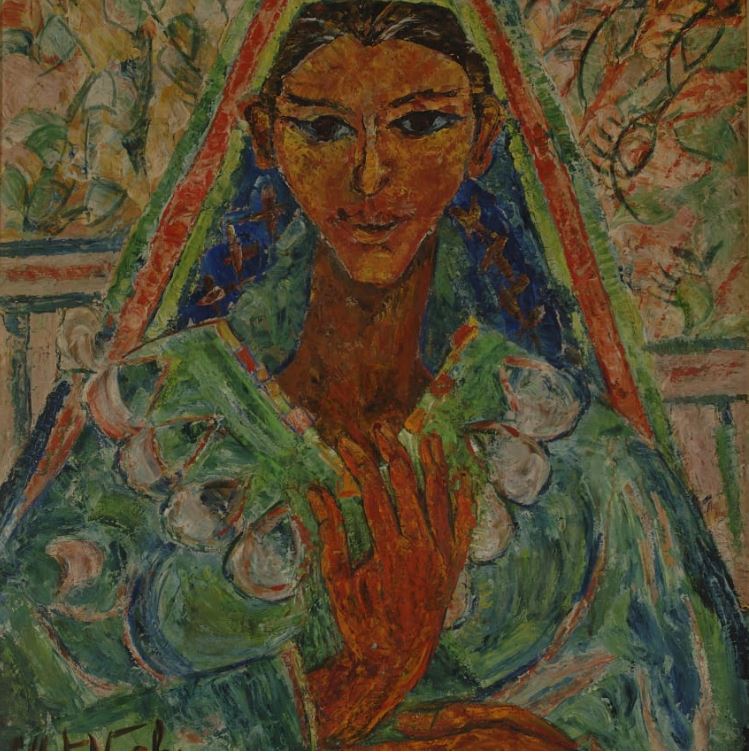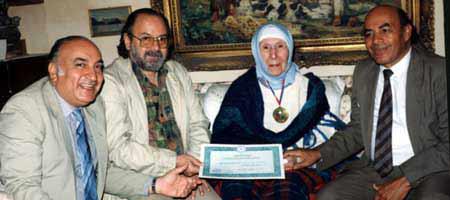Effat Naghi was born into an aristocratic family in Alexandria. Her brother was the great artist Mohamed Naghi, who was twenty years her senior. Naghi was tutored at home and in her early years traveled to Europe several times with her father. When Mohamed Naghi realised that his sister possessed artistic talents, he began to provide her with painting materials to express herself. On several occasions he took her on trips to Upper Egypt where the treasures of the Pharaohs lay. From 1947 to 1950 Mohamed Naghi became the director of the Egyptian Academy in Rome, Effat was there with him where she studied fresco and mural paintings.
It was in Rome that Effat began her career as a painter. She exhibited her work in Alexandria which at this point displayed mainly fauvist influences such as the scene from Abu Hummus Village where the Naghi family owned a farmland. She depicted the daily life of the peasants, their work and their festivals in her paintings. From the early sixties onward, a complete change became evident in Effat’s work, between 1954 and 1964 she spent much time exploring the old heritage books at the Great Library of Cairo. What captured Naghi’s attention most significantly was a collection of books by a French doctor in Alexandria about magical rites, as well as astrological illustrations, books about the natural world, geography, old garments, war relics and terracotta shards from the Greco-Roman, Coptic and Islamic periods.
In 1937 she was awarded a full time scholarship by the Ministry of Culture, a great achievement at the time especially for a woman. From that point on, she pursued the study of deep heritage of the different Egyptian civilizations. She achieved the rare feat of creating works that were readily embraced by an international audience, which recognised the vitality inherent in her assemblages of different artifacts, colours and objects, the result of lifelong, painstaking dedication to her craft, and a belief in the innate mystery and power of her own heritage. Naghi was able to convey this mystery in her work, which gave her art a certain indeterminate quality and irresistible enigmatic beauty.
In 2002, The Effat Naji and Saad Al-Khadim Museum was opened. It is located in the Zaytoun neighborhood in Cairo on an area of 520 square meters. The museum includes a collection of 198 works of art by the artist Effat Nagy and the artist Saad Al-Khadem, as well as a collection of popular pottery pieces, in addition to a special library for artists that contains rare books. The museum is a vessel for preserving the heritage of the artists Effat Naji and her life’s journey companion, the artist and teacher Saad Al-Khadim, as they are two of the most prominent art figures in Egypt in the second half of the twentieth century and pioneers in the field of popular art and its study.

Biography and artwork courtesy of Safarkhan Gallery, Cairo
